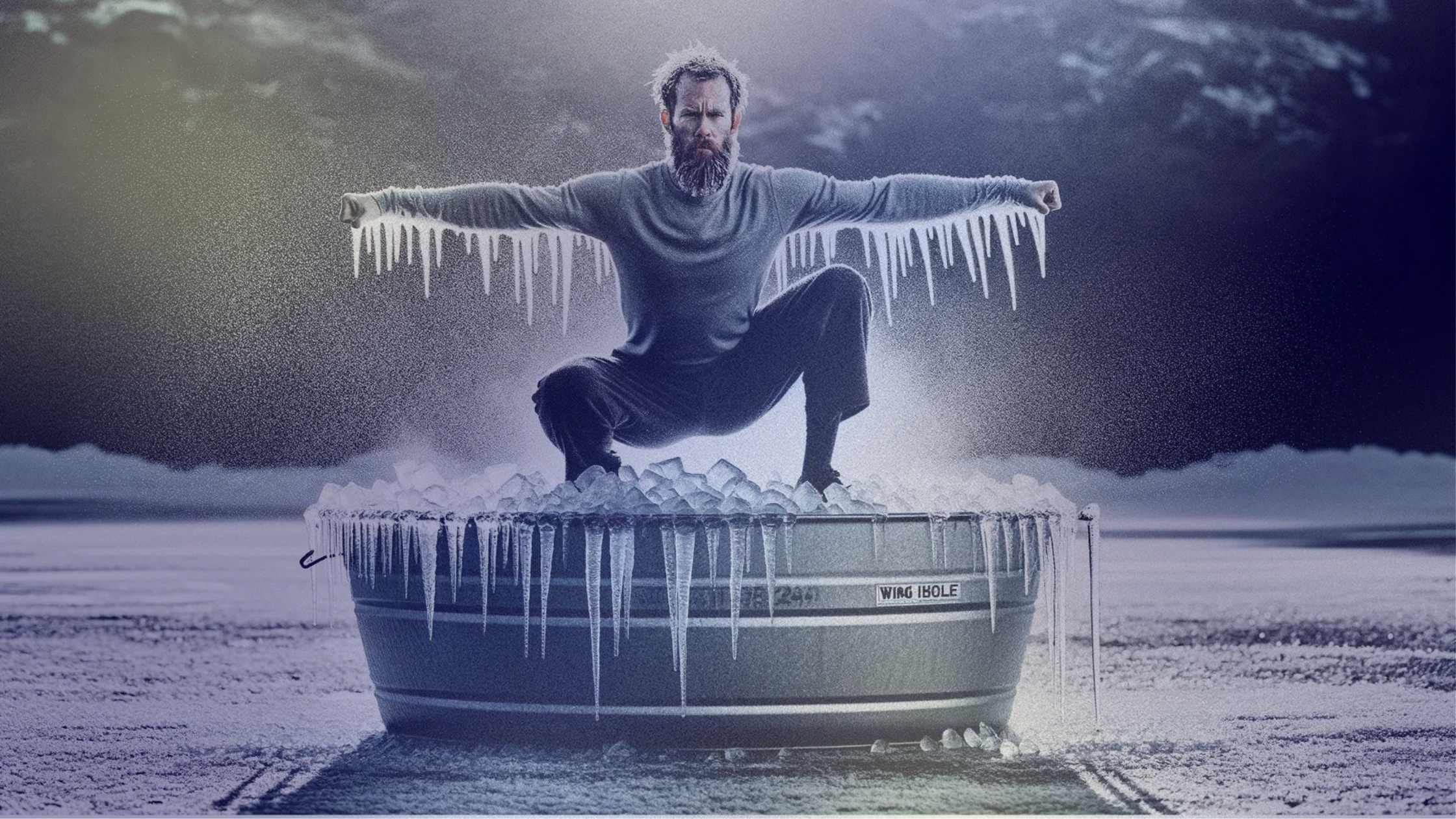What To Do After An Ice Bath - Post Plunge Protocol
Taking an ice bath is trending, no doubt. But we hope to think the masses are plunging into the cold for more benefit than a cool Instagram story.
There’s growing evidence that ice baths are good for you, and moving beyond a practice for just athletes and devout wellness enthusiasts, ice baths are becoming almost a staple in many a household and scattered regularly in exercise programs and even as leisure activity. However, what you do after emerging from the frigid waters is just as important as the plunge itself.
The post-plunge protocol involves specific strategies like light movement, breathwork, and allowing the body to rewarm naturally. These techniques aim to maximise the metabolic benefits of cold exposure and can significantly impact brown fat production and other physiological benefits.
Exercise after an ice bath, also known as pre-cooling, also has benefits for performance. Let’s delve deeper into what should be done after an ice bath to ensure maximum benefits.
Understanding the Body's Response to Cold
Before diving into the post-ice bath activities, it’s crucial to understand the body's response to cold exposure. When you immerse yourself in cold water, the body goes into a state of shock, constricting peripheral blood vessels to conserve heat, leading to a rush of blood back to the core and vital organs.
As the body adjusts to the cold, a cascade of metabolic changes occurs, including alterations in hormone levels, inflammation, and metabolic rate.
If you are new to the cold, perhaps the easiest way to explain things is: let yourself be cold, but not too cold. A reminder that ice bathing is safe when practiced within your body’s limits, but it is also wise to have easy access to warm clothing and warm water to minimise risk of cold related injuries.
Recovery Phase: Light Movement
Immediately after an ice bath, you may feel a numbness or tingling sensation in the skin. At this moment, the body is in a state of transition, gradually shifting from survival mode in the cold to a restorative phase.
It is here that light movement comes into play. Engaging in low-intensity activities such as walking or performing gentle stretches can promote blood flow, which aids in the gradual rewarming process and helps prevent muscle stiffness.
Gentle movements can also stimulate the lymphatic system, which relies on muscle action to transport lymph fluids throughout the body. This process is essential for removing waste products that may have accumulated during the intense vasoconstriction of the cold plunge.
Light movement practices can involve the classic Wim Hof Horse stance which involves sinking down into a wide legged squat position with upright spine. You can also add in some light arm movements and pulsing to encourage natural rewarming of the body. Walking, push-0ups, yoga flows and light jumping up and down are also great ways to incorporate light movement post ice bath.
Breathwork for Recovery
One of the most critical components of the post-ice bath protocol is breathwork. The cold induces a type of hyperventilation response due to the initial shock. We have also touched on how to breath during an ice bath here.
Once out of the water, focusing on controlled breathing techniques can help restore balance to the nervous system. Techniques such as the diaphragmatic breathing, box breathing, or the Wim Hof Method can be particularly beneficial. We also recommend trying the 4-7-8 breath to encourage sympathetic nervous system activation post ice bath, which involves a four second inhale, seven second hold and eight second exhale, all done with light slow breathing through the nose.
Breathwork after an ice bath serves several purposes:
It helps regulate the autonomic nervous system, shifting from a sympathetic (fight or flight) state to a parasympathetic (rest and digest) state.
Deep, rhythmic breathing enhances oxygen exchange and assists in the delivery of nutrient-rich blood to cold-stressed tissues.
It promotes a mindful state, which is conducive to the body’s healing and recovery process.
Natural Rewarming and Brown Fat Activation
Perhaps one of the most fascinating aspects of cold exposure is its relationship with brown fat, or brown adipose tissue (BAT). Unlike white fat, which stores energy, brown fat burns calories to generate heat. This thermogenic process is known as non-shivering thermogenesis and is a key player in the body's rewarming after an ice bath.
Allowing the body to rewarm naturally, without external heat sources such as hot showers or heated blankets, can stimulate brown fat activity. The gradual increase in the body's core temperature signals the brown fat to burn more calories to generate heat, thus improving the metabolic rate.
The natural rewarming period is also a time when the body continues to burn calories at an elevated rate. This post-cold exposure metabolism boost is linked to enhanced mitochondrial function and overall energy expenditure.
The Benefits of Enhanced Brown Fat Activity
Activating brown fat has several health benefits:
Improved Metabolic Health: Increased brown fat activity can improve insulin sensitivity and glucose metabolism, which is beneficial for overall metabolic health.
Weight Management: By burning calories to produce heat, brown fat can play a role in weight management and the prevention of obesity.
Cardiovascular Health: Brown fat helps clear fatty acids and glucose from the bloodstream, which can reduce the risk of cardiovascular disease.
Longevity: There's growing evidence to suggest that brown fat activity is associated with increased lifespan, possibly due to its role in energy balance and metabolism.
Exercise After Ice Bath: Enhancing Performance
The concept of pre-cooling, or lowering the body's core temperature before exercise, has been gaining traction. One of the benefits reported by athletes who engage in cold water immersion before training is an enhanced performance, particularly in endurance sports.
This is because pre-cooling can potentially reduce the rate at which core temperature rises during exercise, thereby delaying the onset of heat-induced fatigue.
Testosterone Levels and Cold Exposure
Another intriguing area of research is the relationship between cold exposure and testosterone levels.
Testosterone, a hormone that plays a crucial role in muscle development, recovery, and overall vitality, can be significantly impacted by thermal stress.
A study published in the Journal of Endocrinological Investigation found that short-term cooling can lead to a temporary rise in testosterone levels, which could be advantageous for athletes looking to maximize the anabolic effects of their post-plunge workouts (A. V. Malnev, et al., 1994).
The Anabolic Window Post Ice Bath
The period immediately following an ice bath is sometimes referred to as the 'anabolic window'. It's believed that the body, in an effort to rewarm itself, may become more receptive to nutrients and hormonal signals.
This is where the concept of exercising post-ice bath could potentially amplify the benefits, as the body’s natural efforts to generate heat post-exposure may synergise with the hormonal milieu conducive to muscle synthesis.
Peer-Reviewed Evidence
A peer-reviewed study that examines the effects of pre-cooling on testosterone levels and subsequent exercise performance is pivotal to understanding this phenomenon. For instance, the study "Testosterone responses to intensive interval versus steady-state endurance exercise" published in the Journal of Endocrinological Investigation provides valuable insights into hormonal responses to different types of exercise stimuli under varying conditions, including thermal stress (S. S. Cheung, et al., 2012).
Some other key insights drawn from scientific research on the benefits of pre-cooling with ice baths are below:
Reduces Heat Strain and Improves Endurance: A study by Cotter et al. (2001) found that pre-cooling through ice-vest and cold air, with or without leg cooling, effectively reduced physiological and psychophysical strain, improving endurance performance in the heat (Cotter et al., 2001).
Enhances Sub-Maximal Exercise Performance: Research by Duffield and Marino (2007) indicated that while pre-cooling procedures did not significantly impact maximal sprint performance, they led to a greater distance covered during sub-maximal exercise bouts, hinting at enhanced endurance capabilities (Duffield & Marino, 2007).
Integrating Into Training
Incorporating ice baths and exercise into a training regime should be done progressively and with attention to the body's signals.
It’s advisable to start with shorter ice bath durations and less intense post-bath exercises, gradually increasing as the body adapts.
Pre-cooling strategies like cold water immersion, ice slurry ingestion, or cooling garments can effectively reduce core body temperature before exercise, which may improve endurance performance in hot conditions.
These interventions work by increasing heat storage capacity or by lowering skin temperature, which can enhance heat loss during exercise.
Pre-cooling has been found beneficial for endurance exercise of up to 30–40 minutes. It's particularly valuable in allowing athletes to start exercising with a lower core body temperature, which can delay the onset of heat-induced fatigue and possibly increase performance.
Final Thoughts
The practice of taking an ice bath followed by exercise is a nuanced protocol that could offer significant benefits when executed properly. An ice bath can be a revitalising experience with numerous health benefits, but it’s the post-plunge protocol that can amplify these effects.
Through light movement, controlled breathwork, and natural rewarming, you can stimulate brown fat activity, enhance metabolic health, and promote a state of balance and well-being in the body.
By leveraging the body's natural responses to cold exposure and hormonal fluctuations, you can potentially enhance performance, speed up recovery, and improve overall physical conditioning. As research evolves, it will continue to shed light on the optimal ways to integrate these practices for maximum benefit.








